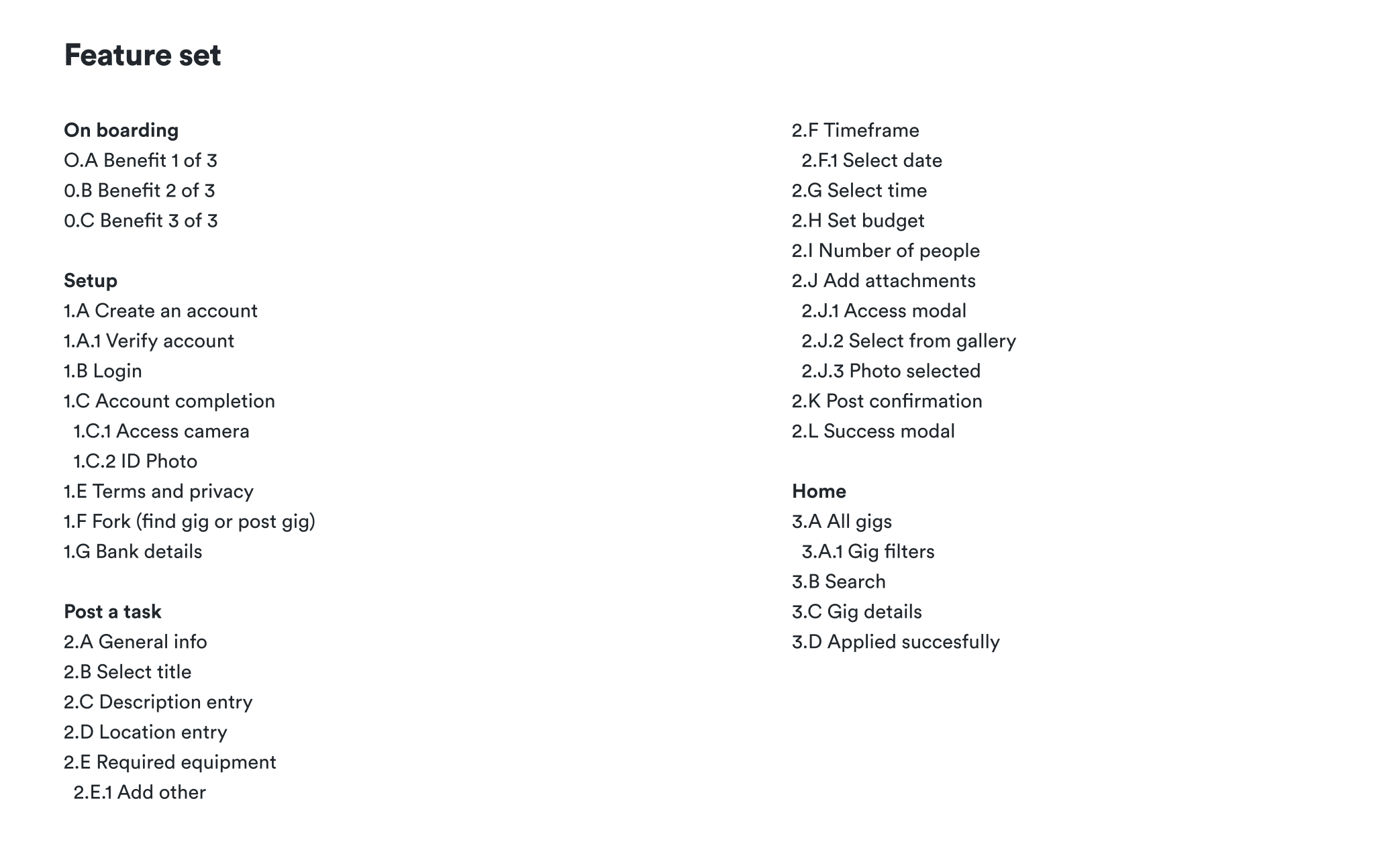
Giggles
Gig Economy is a flexible workforce environment with short-term business ventures, freelance jobs, temporary contracts, and other work opportunities.
Duration
6 Weeks
My Role
Research
UX Design
IxD Design
Visual Design
Prototyping
Tools
Figma
Adobe Id
Adobe PS
Adobe AI
Team
Soudy Kahn (CEO)
Viridiana Trujillo (Product Designer)
project brief
Odd jobs on-demand is a thriving part of the shared economy. This lucrative niche helps connect busy consumers with highly trained and specialized workers who are willing to do just about anything in exchange for a job that offers flexibility, convenience, work-life balance, and a steady income. However, most shared economy companies overlook the skill-less division of odd jobs.
initial research
As this is a breaking in the market type of project, I gathered some business academic papers to dive into the hard business data of this problem. My key findings on this extensive research were:
1. Biakelsey valued the USA crowdsourced economy to stand at $57 billion in 2017. Around 42% of the USA adult population has used an on-demand gig service. The U.S. Bureau of Economic Analysis (BEA) estimates that the combined digital economy grew by an average of 5.6% per year from 2006 to 2016 compared to 1.5% growth in the overall economy.
2. On the ‘needer’ side of the equation the target market is professional individuals who want more time on their hands. The buyer side also includes the elderly, and people who need aid with ordinary skill-less tasks.
3. On the supplier side, freelancers who specialize in the gig economy make up the target market. Generally speaking, they can be identified as 18-34-year-olds who make decisions not only on cost savings but on achieving unique experiences.
2. problem
How can we connect busy consumers who are willing to do hire contractors with suppliers that seek a job that offers flexibility, convenience, work-life balance, and a steady income?
3. our user personas
4. competitive landscape
Regarding competition, there are many competitors in the on-demand gig economy, including Handy, Gigwalk, Swagbucks, TaskRabbit and Thumbtack.
After analyzing the competitors' landscape, five main aspects were observed and decided to integrate into the design:
Ability to sell your services/self
Write a profile description, marketing, and promoting the services each individual provides.Scouting and analyzing:
Agree to pay rates that respond directly to the market in the area. Both 'taskers' and 'task posters' are allowed to set a range of payments that agree to the competition for each role.Skill visualization
This allow tracking preferences and suitable tasks available for all the parties involved.Communication
Once accepting a job make sure all parties involved should communicate as promptly as possible.Reviews
View metrics and reviews for the involved parties so customer satisfaction is always guaranteed.
5. feature set
After analyzing the competitors, we wen’t ahead and mapped the feature set to be later compared and contrast with the mental model map we obtained from other applications and 10 user interviews.
We found that the expected core features responded to the extended set of heuristics planned after the key findings on both the competitive landscape and analysis situation.
After mapping the core features, the sub-features and interaction mid-points were mapped and noted to be further mapped in the IA diagram.


6. visual design
As for the visual elements, Giggles, didn’t own a visual identity, so along with the CEO we designed a branding booklet to set the North Star for the tone and storytelling this application wanted to communicate. After suggesting three main colors (purple, green and blue), the CEO decided that Giggles not only should be distinguished by its UVP (Unique Value Proposition) but by the color.
We choose purple as an accent color since it’s (most) universal meaning implies creativity, wisdom, dignity, power, inspiration, ambition and quality. Wanting to come across as inspirational and ambition-fueled for those contractors looking to provide their services.
7. information architecture
8. user-flows (sneak peak)
9. lessons learned
The importance of business goals in considering a potential solution
At the beginning of this project, there was a big push from our stakeholders to explore the most simple ways to connect both parties at stake (consumers and contractors).
However, once we conducted the contextual inquiry, which involved security issues, trustworthiness, and users pursuing both payments and physical security, a non-filtered connection was not only infeasible but not appropriate for a job board platform. This research finding was particularly important for me because it served as a reminder to take a step back from stakeholder expectations as research might prove there to be a better solution out there.
I’ve thrown a bunch of info at you, but if you still want to see my whole process…











